Casement Park: All you need to know about the stadium soap opera
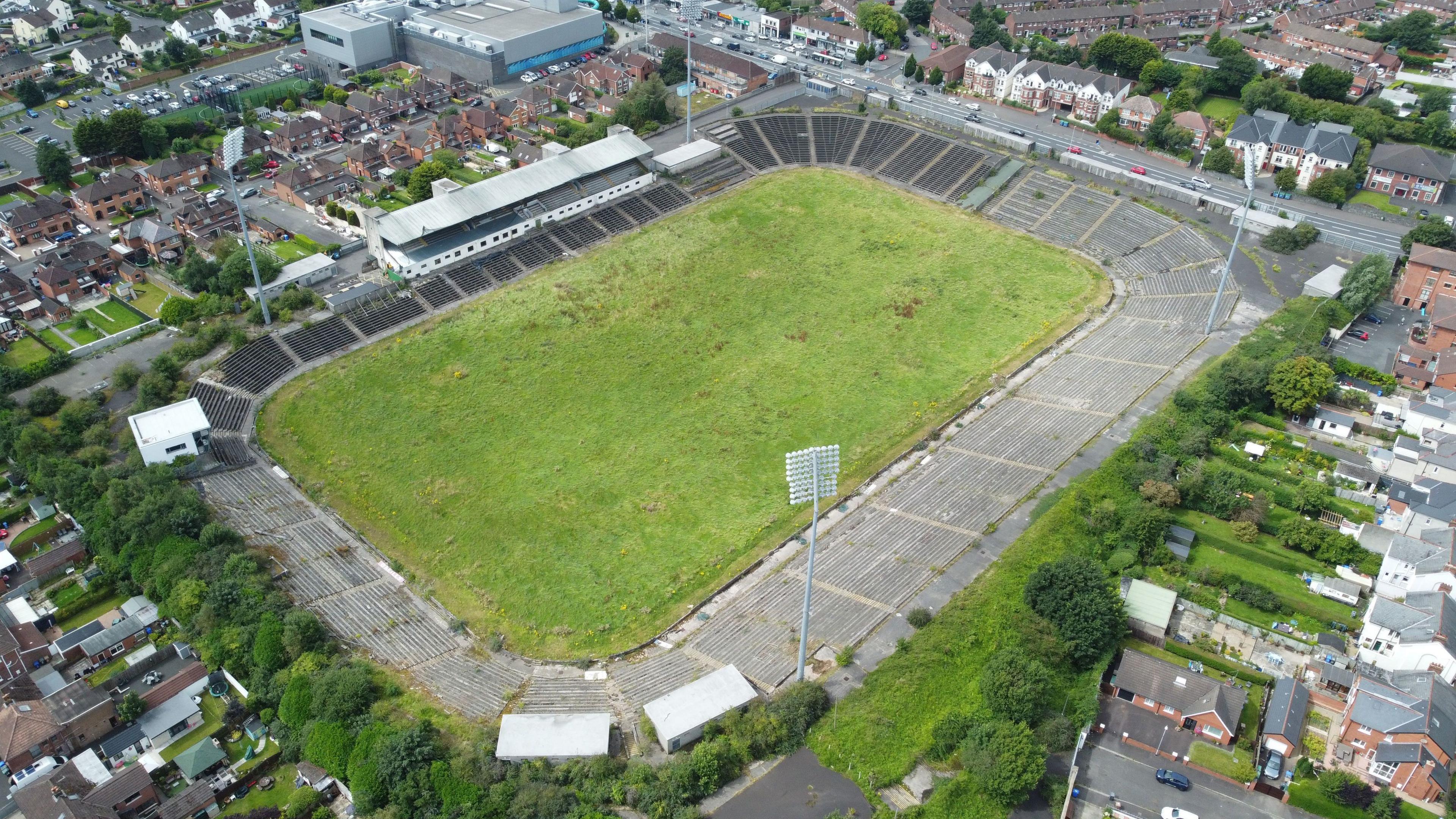
The west Belfast site has been earmarked for a new stadium since 2011
- Published
Casement Park has been a 14-year stadium saga.
The west Belfast site has been earmarked for a state-of-the-art new stadium since 2011 and was even included as a host stadium for when the UK and Ireland host Euro 2028.
But constant delays, legal issues and rows over funding meant the Euro 2028 dream withered while weeds continued to overtake the traditional home of Gaelic games in Belfast.
Now, with the UK government announcing a contribution of £50m towards the stadium's redevelopment, we take a look what needs to happen for Casement to finally get over the line - and how we got here in the first place.
Where is Casement Park?
In west Belfast, just a stone's throw from the busy M1 motorway heading south out of the city, is where Euro 2028, one of the world's biggest sporting tournaments, was supposed to be hosted in Northern Ireland.
It first opened in 1953 as a stadium for Gaelic games, and has been the home of Antrim GAA since its inception. The official capacity was just more than 31,000, although three-quarters of the ground was terracing.
However, there have been no visitors to Casement in more than a decade and, for years, any passing motorists able to crane their neck into the ground would only see a derelict husk.
Clearance work did begin at the site in February 2024 in anticipation of the stadium's construction for Euro 2028 - but the long-running row over who pays for it put paid to Northern Ireland's hosting hopes.
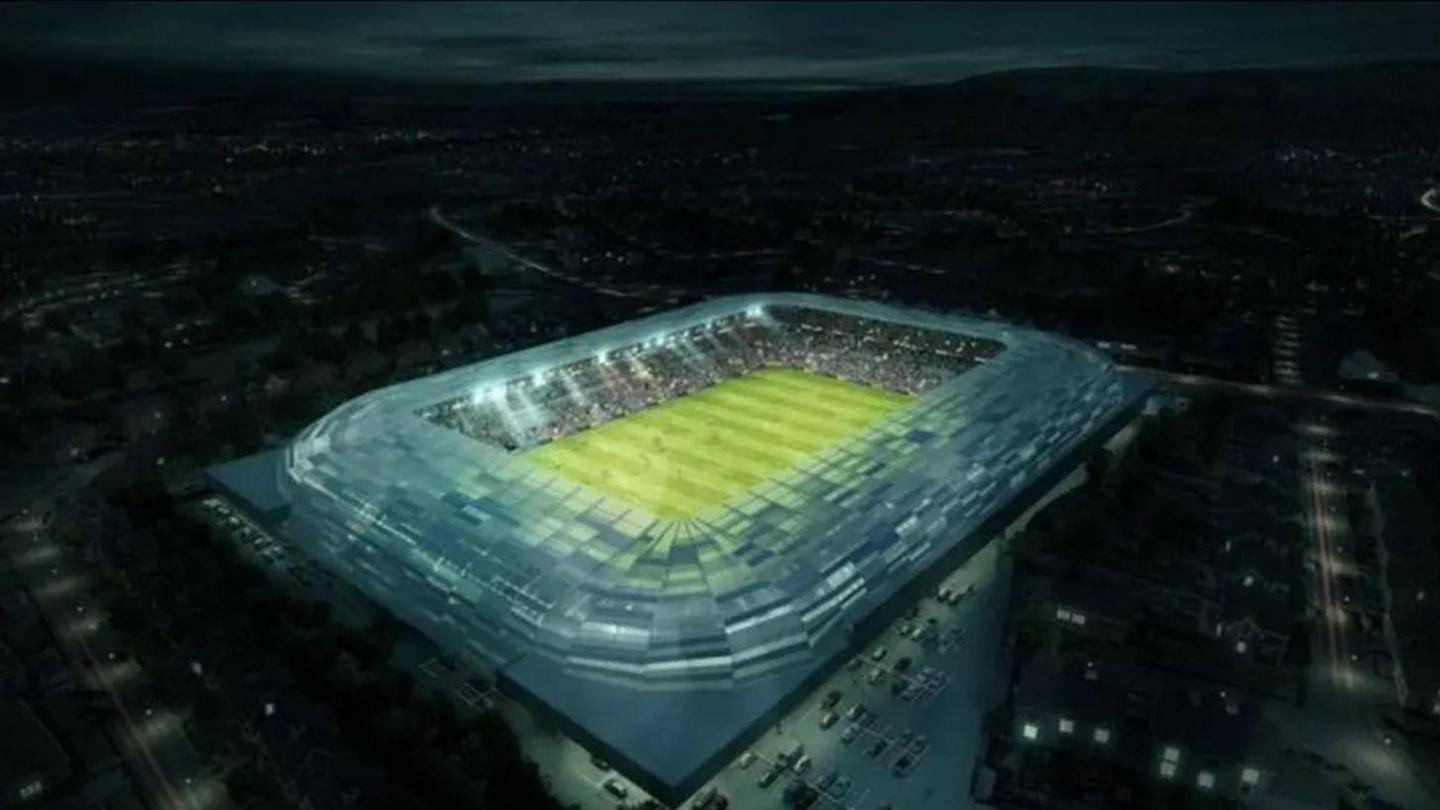
An artist's impression of the new proposed stadium, which would have a capacity of 34,500
What happened to Casement Park and Euro 2028?
Short answer - nothing. And it's because of money.
There have been plans to build a new stadium at Casement Park since 2011, long before Euro 2028.
Originally that stadium was to cost about £76m, with £61m coming from Northern Ireland's power-sharing government and £15m from the Gaelic Athletic Association (GAA).
But those plans got bogged down in a morass of legal rows, safety concerns and planning permission issues.
Hope was rekindled in October 2023 when Casement Park was included as a host venue as part of the UK and Ireland's successful bid to host Euro 2028.
However, Uefa tournament specifications, which would turn the GAA ground into an all-seater stadium suitable for Euro 2028, meant construction estimates spiralled - at least £300m, and possibly more than £400m according to the UK government (an estimate the GAA said was "wildly exaggerated").
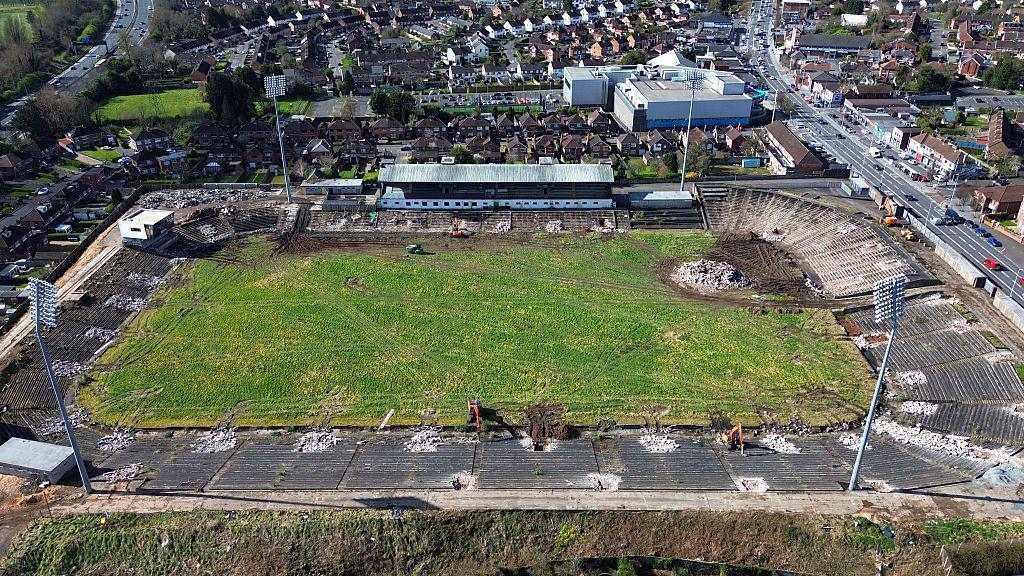
Clearance work did begin at the site in February 2024
It would also have to be ready by summer 2027 - a tight turnaround, although not impossible if the hefty bill could be paid.
The cash-strapped Northern Ireland Executive said it would pay no more than £62.5m and the GAA similarly would not go beyond £15m.
With the Irish government promising €50m (£43m), it was all down to whether the new Labour government was willing to make up the rest.
Last September, judgement was delivered - the UK government would not meet the shortfall and Casement Park would not be built for Euro 2028. Northern Ireland would not host matches as part of the UK and Ireland tournament.
Why didn't they play Euro 2028 at another Northern Ireland stadium?
Uefa requires that all European Championship stadia have a capacity exceeding 30,000.
The National Stadium at Windsor Park - Northern Ireland's footballing home - holds 18,500 spectators.
The Irish Football Association (IFA) said there was "no route to fund an expansion" of the ground, despite it being the preference of some Northern Ireland football fans.
When it came to Euro 2028 in Northern Ireland, it was Casement or bust.

The weeds are getting longer at Casement, pictured in April 2025
What now for Casement and who's paying for it?
Euro 2028 may be gone, but Casement could live as per its original vision - a state-of-the-art ground that could become the home of Antrim GAA and the host for Ulster finals, major events and concerts.
A reduction in capacity and no requirement to meet Uefa tournament standards means estimated costs have fallen to about £250m-£270m.
But that is still a hefty wedge and the standoff over who will pay has continued, with a little friction at times.
In January, minutes emerged of a "fraught and tetchy" meeting between the GAA and the Northern Ireland minister responsible for sport, Gordon Lyons.
The GAA has acknowledged it will increase its financial commitment to the project and said it was cautiously optimistic ahead of the UK government's spending review.
That optimism has paid off, with the UK government saying it will contribute an extra £50m towards Casement's construction.
However that still leaves a shortfall of about £90m.

The most recent plans for the stadium were finally approved in 2022
What is the story behind the Casement Park delay?
To answer that question, we have to go back a couple of decades.
At that time, Northern Ireland's three main stadiums for football, rugby and GAA - Windsor Park, Ravenhill, and Casement - were seen as increasingly not fit for purpose.
Money and a new plan was needed.
Initially, Northern Ireland's power-sharing government - the Northern Ireland Executive - came up with an idea for a new, multi-purpose national stadium for all sports.
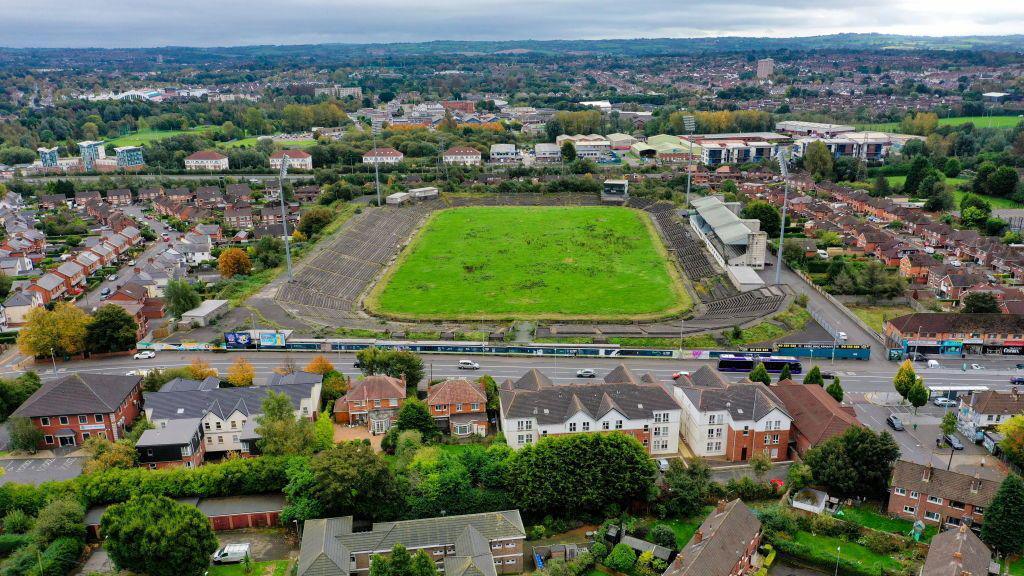
Casement Park is located off the Andersonstown Road in west Belfast
But the divisive proposal of situating the stadium at the site of the Maze Prison - which held paramilitary prisoners during the Troubles, Northern Ireland's bloody conflict of 30 years - meant the idea was eventually dashed on the political rocks.
So instead, in 2011, it was decided that cash would go towards stadium redevelopment:
Windsor Park, the home of Northern Ireland's international football team and Linfield FC, would get £25m to build a 18,500 all-seater stadium - it reopened in October 2016
Ravenhill, the home of Ulster Rugby, was redeveloped and capacity increased to 18,000 at a cost of £16.5m - work finished in May 2014
About £36m would be set aside for sub-regional football stadia aka grounds used by local football club
And Casement Park would get £61m - the same amount as football in total - for a new 38,000 capacity stadium
While Ravenhill and Windsor - or the National Stadium as it is now officially known - are open and hosting big events, Casement Park has only seen a digger or two.
Why has the Casement Park redevelopment taken so long?
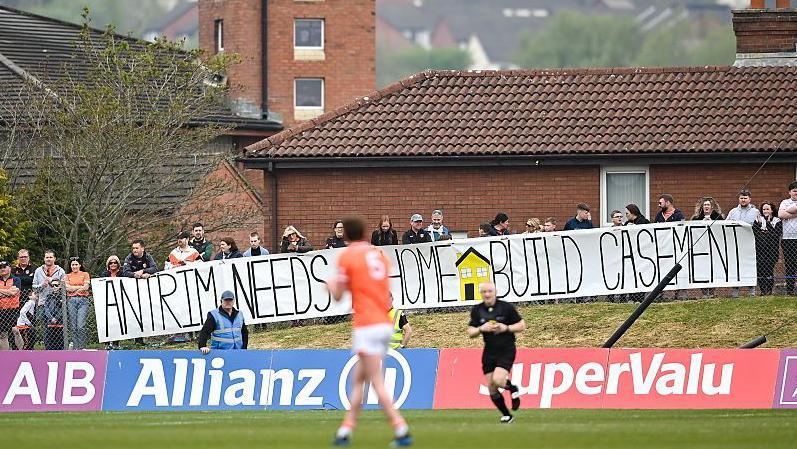
The stadium's dereliction has also caused logistical problems for its main tenant, Antrim GAA
In 2012, stadium designers were appointed to the project and it was expected the new Casement Park would be built by 2015. But it did not turn out that way.
The first big obstacle came in 2014, when the High Court overturned planning permission for the project.
Local residents had lodged a legal challenge over objections to the stadium's size - they said it would block out light from homes and cause serious traffic disruption.
Then, in 2015, came possibly the most contentious year of the Casement Park project.
Firstly, it emerged that a Safety Technical Group (STG) formed to oversee safety issues around the new stadium had not approved the design plans due to concerns over how long it would take people to leave the ground in an emergency.
Later, one of the STG members, safety expert Paul Scott, told a Northern Ireland Assembly committee that he had been put "under pressure" to approve the plans by government officials.
He also complained of bullying - he later settled an industrial tribunal case with Sport NI.
With the original Casement plan now scrapped, the GAA went to work on plans for a new stadium, revising the capacity down from 38,000 to about 34,500.
It submitted a fresh application for planning permission in 2017, which was granted in 2021.
Finally, in 2022, local residents lost a legal challenge against the new project against the plan - the stadium could now go ahead.
What else do we need to know about Casement Park?
You can be sure other sports - particularly football - will be looking at the UK government's £50m Casement contribution and asking: What about us?
When the funding package for Northern Ireland's stadiums was first put together in 2011, a key tenet was equal money for football and Gaelic games - just more than £60m for each, with the GAA spending it on Casement and the football money being split between redeveloping Windsor Park and a fund for what are described as sub-regional football stadia.
This is basically a term for local football grounds, and the money is badly needed - most football league grounds in Northern Ireland are in dire need of redevelopment.
But, rather like Casement, the sub-regional stadia fund has been long delayed due to years of political instability. It only opened at the start of this year for applications and no money has been distributed yet.
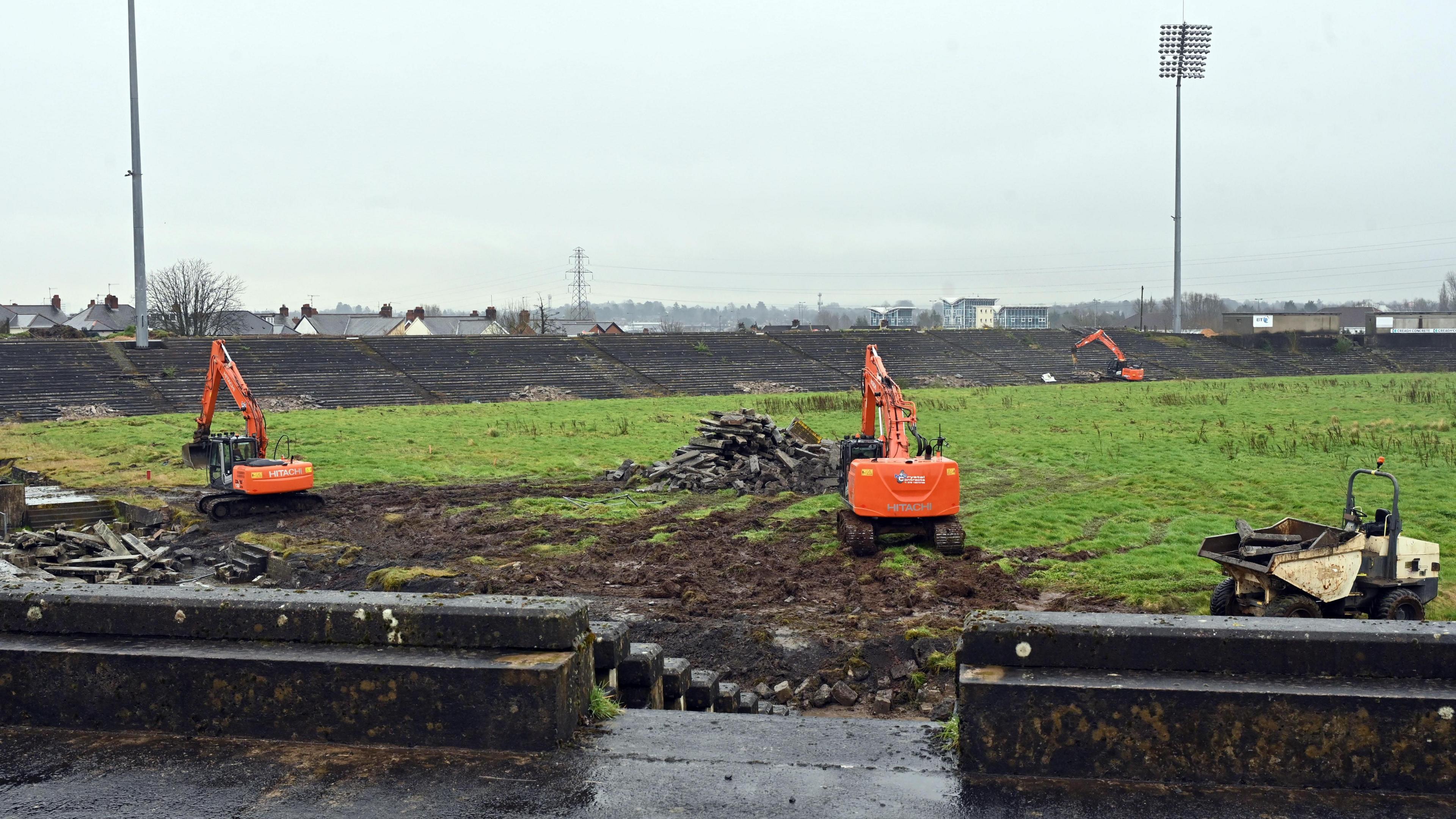
A few diggers were spotted at the start of 2024
As the original stadium plan put Gaelic games and football on an equal funding basis, it is likely football authorities will be asking if they can get more money ala Casement.
The issue is also further complicated by how sport and politics intertwine in Northern Ireland.
Unionism and the GAA have long had an uneasy, distrustful relationship.
One of the GAA's own stated goals - "the strengthening of national identity in a 32-county Ireland through the preservation and promotion of Gaelic games and pastimes" as per the organisation's official guide - puts it and unionism in political opposition.
Casement Park itself is in predominantly nationalist west Belfast and named after after Sir Roger Casement, an Irish revolutionary who, in 1916, was executed in London for treason.
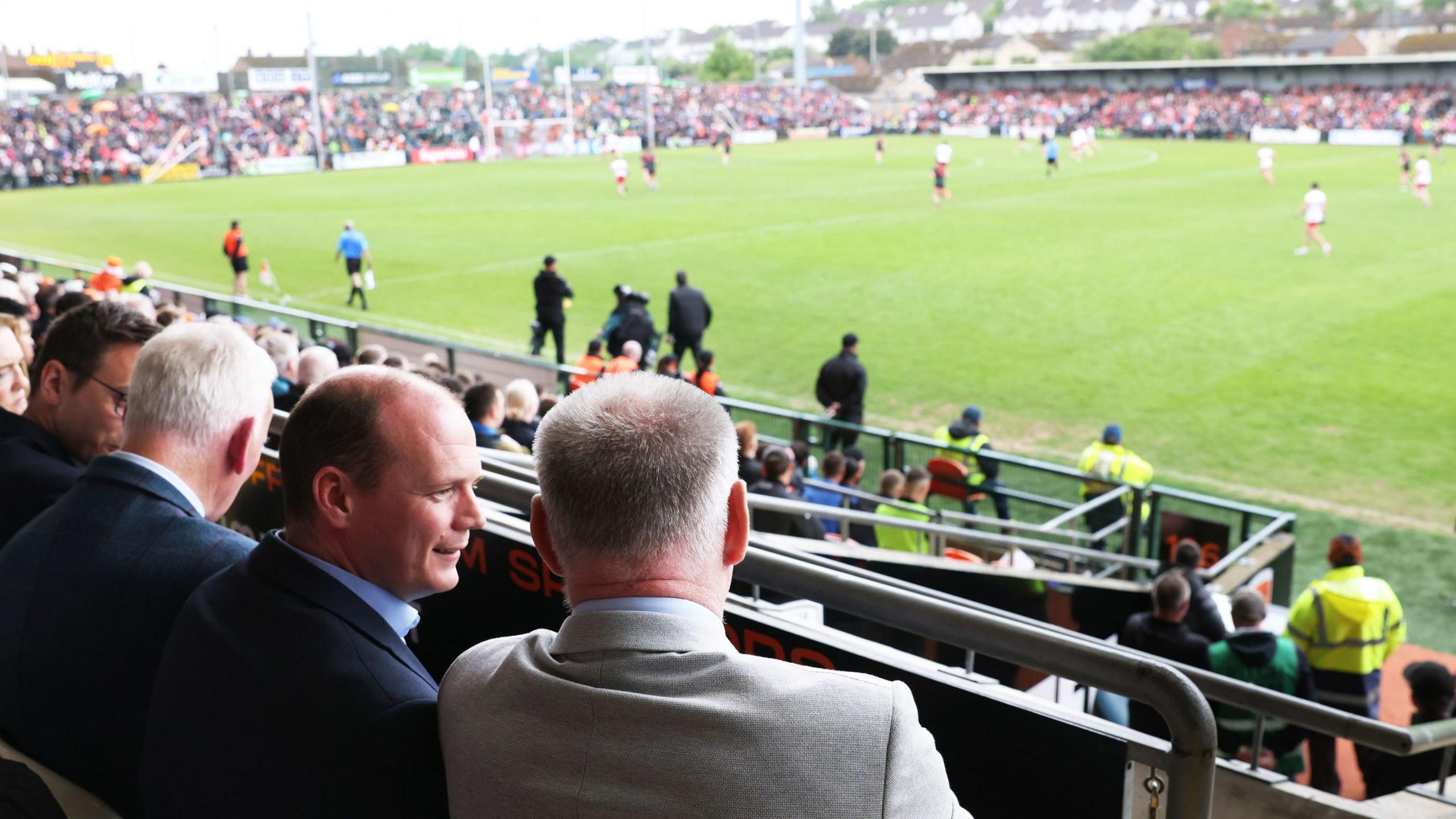
Communities Minister Gordon Lyons (second right) went to his first GAA match in May
However, DUP minister Gordon Lyons attended his first GAA match last month in a move seen as highly symbolic given its timing close to the UK government's spending review.
That optimism may be most keenly felt by the stadium's long-term tenant, Antrim GAA, who have essentially been left without a fit-for-purpose home ground thanks to its dereliction.
So what next for Casement Park?
The short answer - get the money, get the stadium built and file the Casement saga into history.
The long answer? Even with the UK government's £50m, there's still up to £90m that needs to be found and it's very unlikely the GAA, even if it ups its contribution, will cover the whole shortfall.
However, the UK government's move is the best news the Casement project has received in a long time - and with the political will of the GAA, supported by Northern Ireland's biggest political party Sinn Féin, to get Casement built, there could be more to come.
Watch this space.
Related topics
- Attribution
- Published10 October 2023

- Published30 November 2024
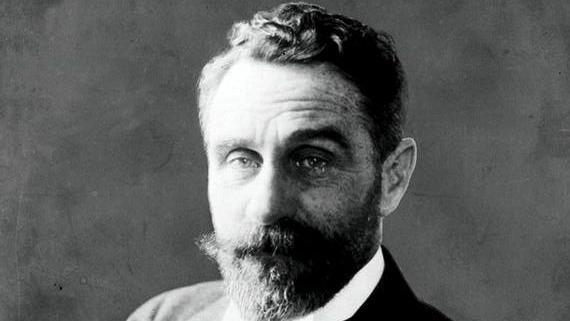
- Published14 September 2024
